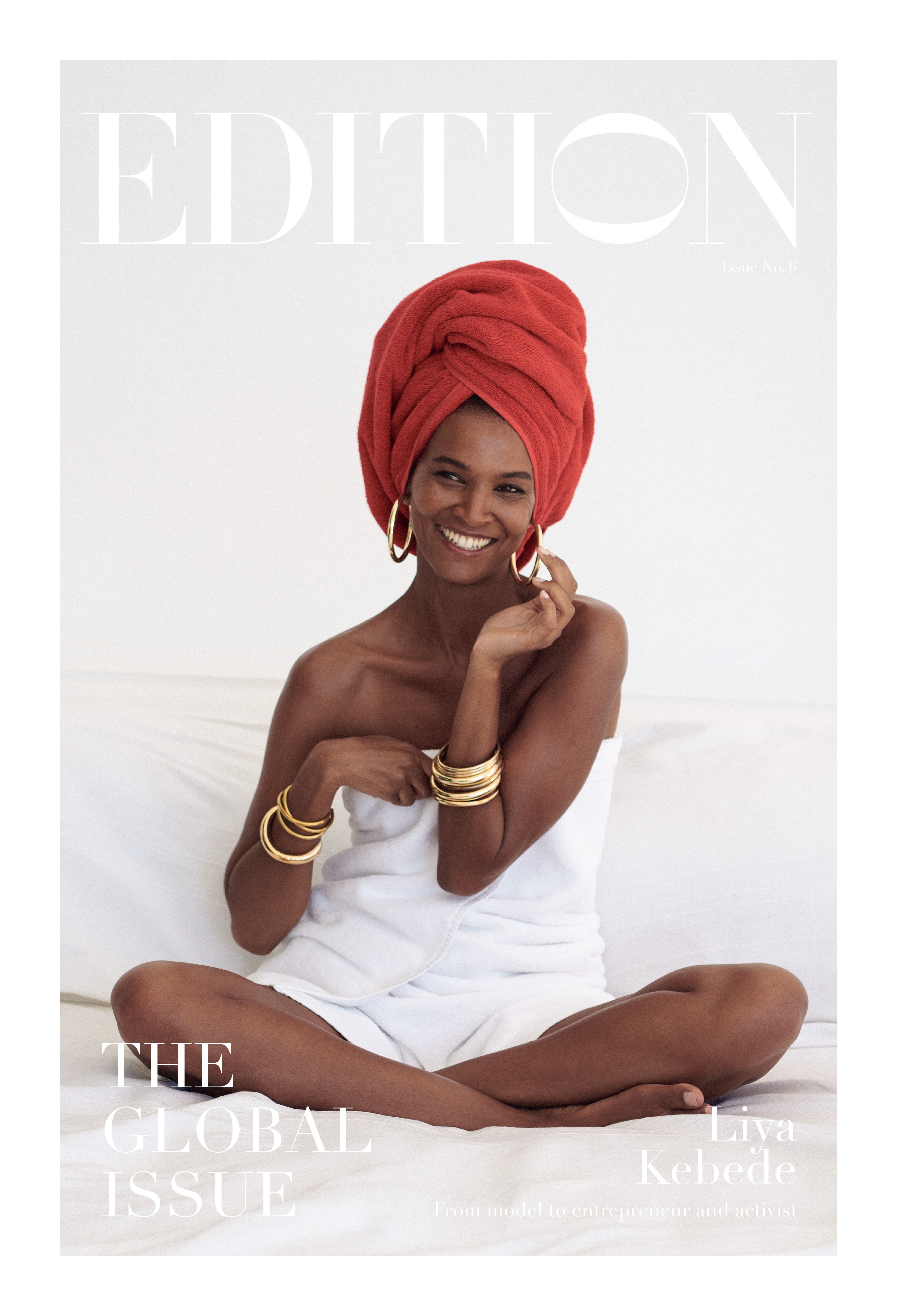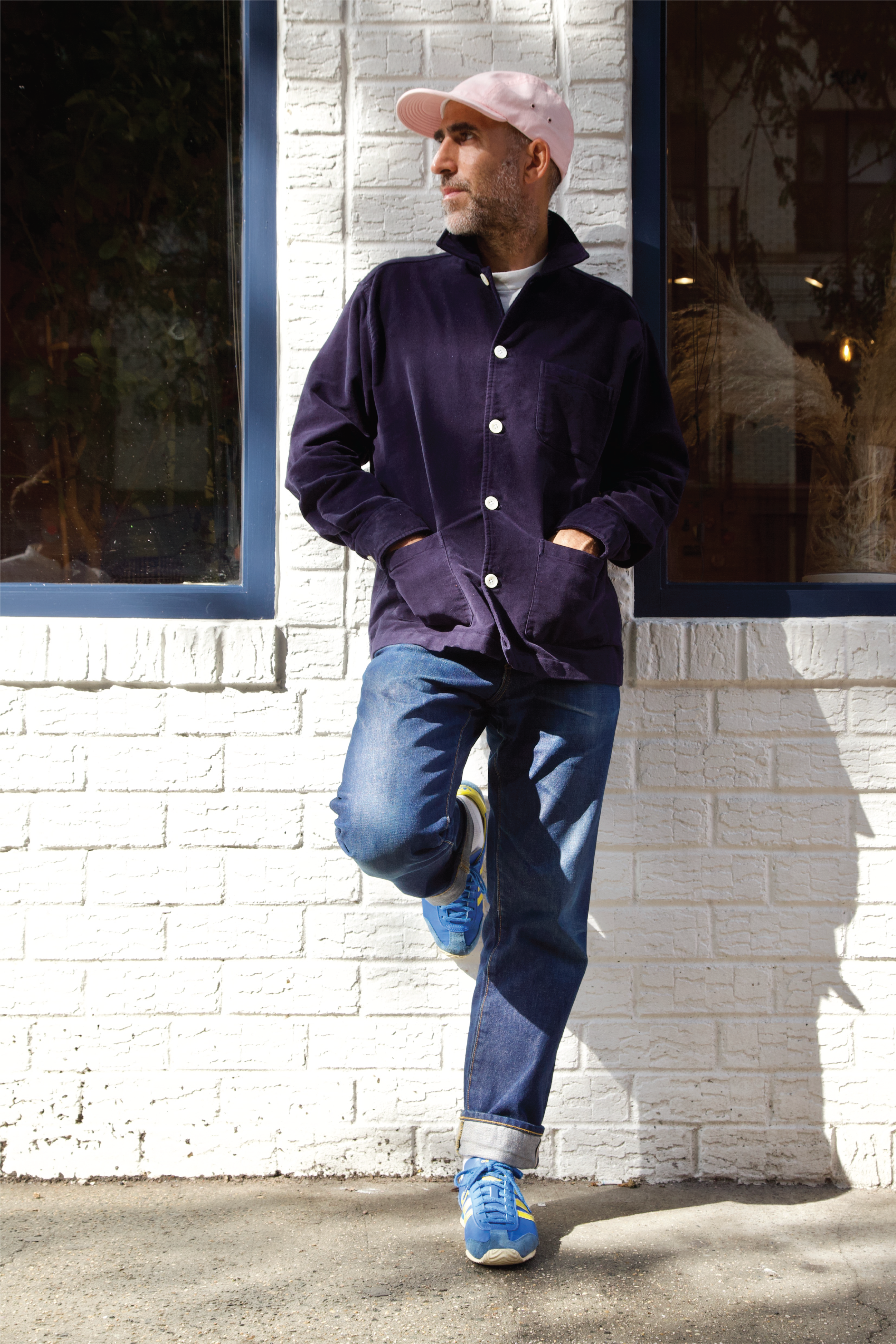Supreme’s former creative director wants to end the cycle of consumption with his new brand Noah

Global Issue
Global Issue: Editor’s Letter
Editor’s Letter
John Fraser
The Michelin-starred chef has a story to tell you through his cooking
Pundy’s Picks for Conscious Travel
Six tips for considered and conscious travel
Genmaicha Martini Recipe
The classic martini plus the health benefits of green tea
The Spread Love Project by Nicholas Konert
How Nicholas Konert’s rainbow heart design became an international icon
Wade Davis
Anthropology is the antidote to today’s nativism says the scholar and author
Carla Sozzani
The future of retail according to the founder of legendary concept store 10 Corso Como
The Art of Migration
The power of art to inspire empathy and social action
John Pawson
Zen Buddhism and minimalist purity drive the celebrated architect
Amy Duncan
As the CBD line Mowellens expands into skincare, its founder shares the personal story behind her company
Sila Sveta
Moscow’s favorite media studio finds the perfect balance between art and commerce
David de Rothschild
In his calls for environmental awareness, the modern explorer finds harmony between man and nature
Can Fashion Be Sustainable?
Shaping a better world through what you buy – or don’t
Brendon Babenzian
Supreme’s former creative director wants to end the cycle of consumption with his new brand Noah
Lily Kwong
Nature invades the urban jungle in the landscape designer’s expansive projects
House of Yes
Behind the scenes with the Bushwick nightlife collective promoting inclusivity and consent culture
Vivie-Ann Bakos
DJ Extraordinaire
Chez Dede
A medium in which two world-traveling, adventurous spirits absorb the globe’s vast curiosities and share them freely
Jesse Israel
A meditation guide for extraordinarily large groups
Liya Kebede
The Ethopian model, activist, and entrepreneur uses her label Lemlem as a force for change

Supreme’s former creative director wants to end the cycle of consumption with his new brand Noah
Brendon Babenzian
Supreme’s former creative director wants to end the cycle of consumption with his new brand Noah
By Janelle Anne
www.noahny.com
Photography courtesy of Noah
It’s weird because I guess we’re sort of a global brand at this point, but it’s really a family business,” says Brendon Babenzian about his menswear brand Noah, based in downtown New York. He speaks with a thoughtful selfawareness uncommon in people, especially people who’ve spent decades as the creative director behind the cult streetwear brand Supreme. He’s 47 years old now, with a wife who plays a big role in the company and a daughter who was only a month old when the first Noah pop-up launched. The Nolita flagship officially opened its doors in 2015.
More than just surf and skate wear for grown-ups, Noah’s mission is to get people to buy less, knowing very well that nobody is ever going to stop buying stuff completely. Already a radical idea for any brand whose very existence depends on purchases, it is even more of a departure from the streetwear industry that Babenzian used to inhabit, with its long lines for limited-edition releases, worldwide eBay resales, and many, many imitators in its path.
On the surface, it’s easy to assume that perhaps Babenzian feels conflicted for having created a monstrosity of reckless consumerism out of the brand Supreme. But ten minutes into talking to him,
it becomes clear he has been priming for the release of Noah his whole life—since he was thirteen years old, in fact, when he began selling cigarettes and magazines at a local surf shop before expanding into skateboards and sweatshirts. Today, he assumes a humble realist’s approach to creativity and apparel, most occupied with being nice to oneself, to one’s friends and family, and to one’s surroundings.
Babenzian remembers that when he left Supreme years ago, “My departure was really more about me needing to do things in a different way for different reasons. I wanted to contribute to the evolution of how people think about products, business, brand, infrastructure, the whole nine, like what a business could be.”
Noah’s philosophy is pretty simple: Make better stuff and people will buy better stuff—and less of it. After years of consideration and involvement with the clothing business, Babenzian also considers his new brand a platform for counteracting the spread of climate misinformation but with a quieter “lead by example” approach rooted in the reasons he got into making clothes in the first place. “To me, it goes hand in hand with creativity because the less stuff you have, the more creative you have to be. I’m much more into people who do more with less.
That’s why I go back to hip-hop and skateboarding from twenty to thirty years ago, before there were whole industries built around them.” He adds with a laugh, “Anyone who walks in with the latest and greatest, that’s easy—that just means you’re rich.”
Before you take that as a jab at hypebeasts, consider this: People are always going to want the shiny and new. It’s human nature, and it’s what our society was built on. But what Babenzian is proposing is another, less guilt-ridden path to earthly salvation. “It’s not so much about looks and trends or the next ‘big idea,’” he elaborates. “We think about individuals being themselves, having a personal style. Once people have a personal style, they rely less on clothing to speak for them. That’s what I find really interesting: people who take normal stuff and, because they’re creative themselves, they can make it look good.”
So what has been inspiring the man who’s inspired so many other streetwear brands lately? It’s not Instagram, that’s for sure. He’s been off the platform for about five months, calling it “one less thing to distract and mess with emotions.” Whatever he’s doing, he doesn’t need to advertise the fact that it’s working for him. Timing, skill, grit—all things Babenzian makes look as effortless as a hoodie.
Art & Culture
The power of art to inspire empathy and social action
Zen Buddhism and minimalist purity drive the celebrated architect
Moscow’s favorite media studio finds the perfect balance between art and commerce
Behind the scenes with the Bushwick nightlife collective promoting inclusivity and consent culture
DJ Extraordinaire
A medium in which two world-traveling, adventurous spirits absorb the globe’s vast curiosities and share them freely
A meditation guide for extraordinarily large groups
Experiences
Moscow’s favorite media studio finds the perfect balance between art and commerce
In his calls for environmental awareness, the modern explorer finds harmony between man and nature
Behind the scenes with the Bushwick nightlife collective promoting inclusivity and consent culture
DJ Extraordinaire
Food & Drink
The Michelin-starred chef has a story to tell you through his cooking
Six tips for considered and conscious travel
Personalities
Style
The classic martini plus the health benefits of green tea
How Nicholas Konert’s rainbow heart design became an international icon
As the CBD line Mowellens expands into skincare, its founder shares the personal story behind her company
Nature invades the urban jungle in the landscape designer’s expansive projects
The Ethopian model, activist, and entrepreneur uses her label Lemlem as a force for change

